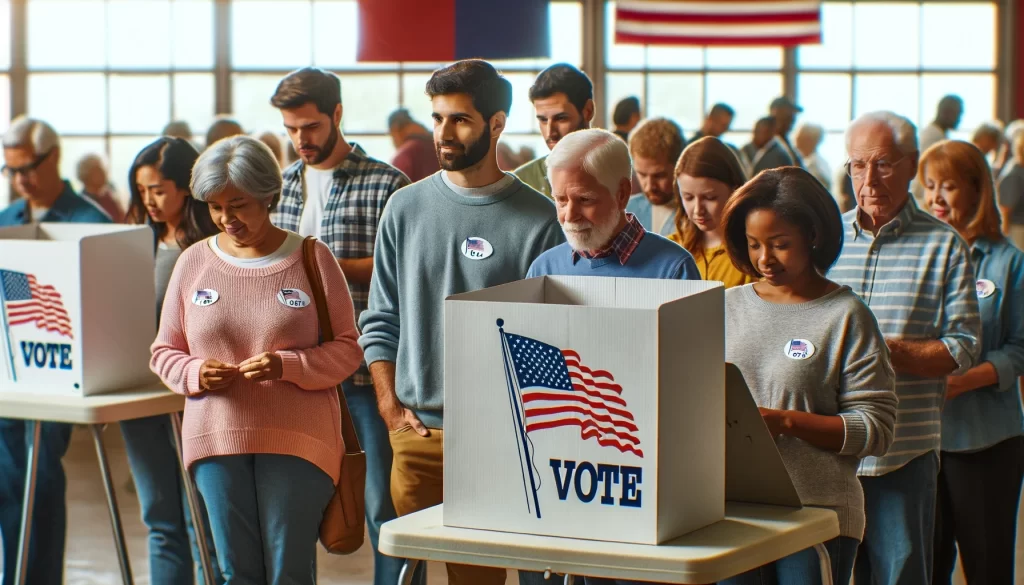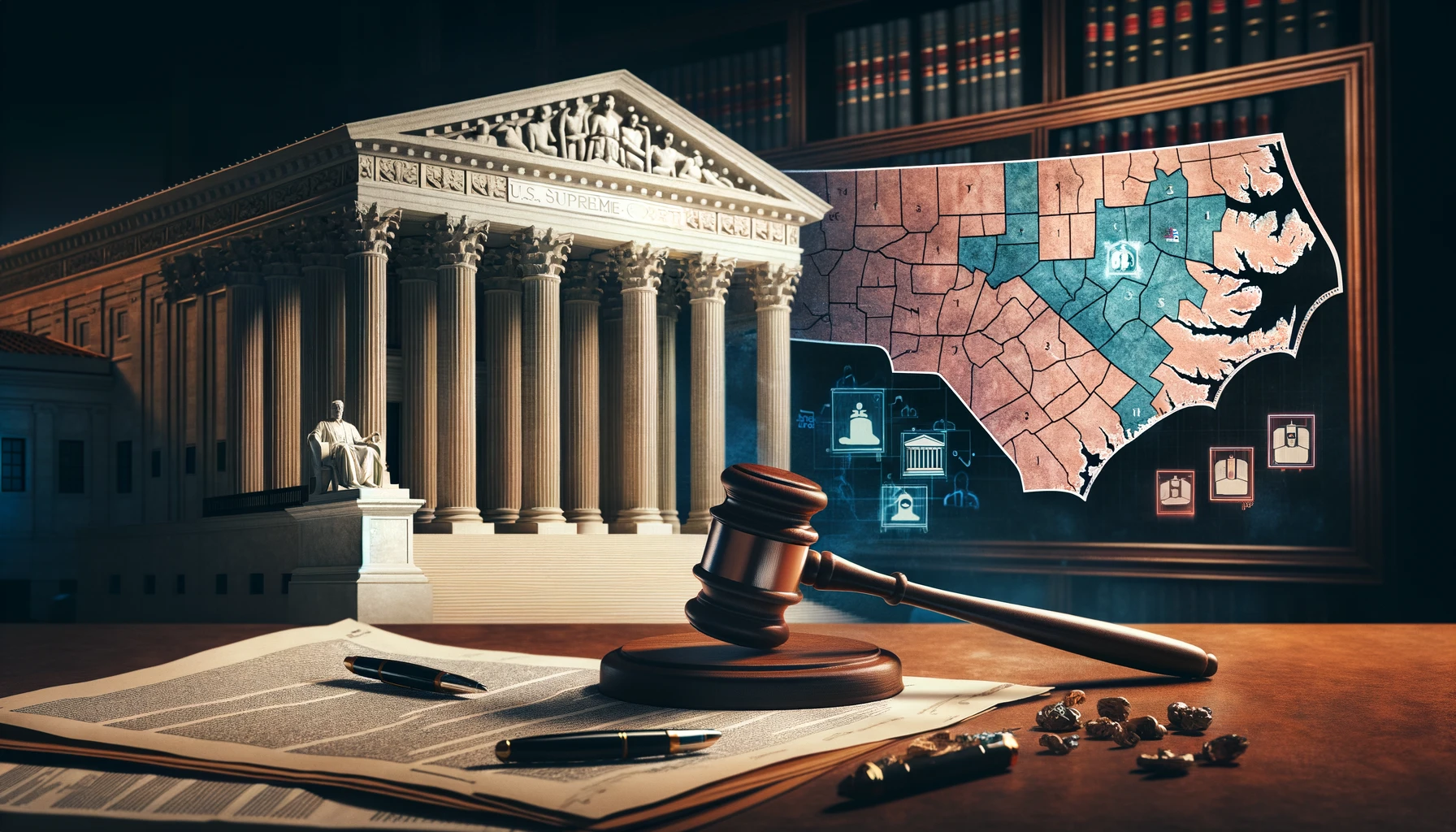On May 23, 2024, the U.S. Supreme Court ruled in favor of South Carolina Republicans, allowing the use of a congressional voting map that had previously been deemed unconstitutional by a lower court. The decision was a significant legal victory for the Republican Party, as it upheld the redrawn map that increased the number of white voters in one district by moving 30,000 Black residents to another district.
Background of the Case
The case involved the 2022 redistricting of South Carolina’s congressional districts by the Republican-controlled state legislature. The new map increased the number of white voters in the First Congressional District while reducing the number of Black voters. This change was contested by civil rights groups, including the NAACP and the American Civil Liberties Union, who argued that it amounted to racial gerrymandering, which is illegal under the U.S. Constitution’s Equal Protection Clause.
Supreme Court’s Ruling
The Supreme Court’s ruling was a 6-3 decision, with the conservative justices in the majority and the liberal justices dissenting. The majority opinion, written by Justice Samuel Alito, argued that there was no direct evidence to prove that race was the primary factor in the redistricting process. Instead, they contended that the changes were made for partisan reasons, which are permissible under federal law.
Justice Alito wrote, “We start with a presumption that the legislature acted in good faith,” emphasizing that the challengers failed to provide enough evidence to show that race, rather than partisan advantage, drove the redistricting decisions.

Dissenting Opinion
The dissenting opinion, written by Justice Elena Kagan and joined by Justices Sonia Sotomayor and Ketanji Brown Jackson, criticized the majority for setting a high bar for proving racial gerrymandering. Justice Kagan argued that the decision makes it much more difficult to challenge voting maps on the basis of racial discrimination. “What a message to send to state legislators and mapmakers,” she wrote, highlighting the potential for the ruling to enable racial discrimination under the guise of partisan politics.
Implications
The Supreme Court’s ruling has significant implications for future elections and sets a legal precedent for redistricting cases across the United States. By requiring challengers to disentangle racial motives from partisan ones, the court has raised the evidentiary standard needed to prove racial gerrymandering. Justice Samuel Alito emphasized the presumption that the legislature acted in good faith when drawing district boundaries, making it more challenging for civil rights groups to contest such maps. This decision follows a broader trend in the Supreme Court’s rulings that limit federal oversight of state election laws, particularly those that benefit Republicans.
Civil rights groups and Democratic lawmakers expressed significant concern over the ruling, warning that it could encourage the use of race as a proxy for partisan advantage. Justice Elena Kagan, in her dissent, argued that the decision creates additional barriers to challenging discriminatory voting maps and undermines efforts to address race-based discrimination in redistricting. The ruling allows the contested map to be used in the 2024 elections and raises important questions about the future of voting rights and the ability to effectively challenge racial gerrymandering in courts.
Reactions
Civil rights groups and Democratic lawmakers expressed disappointment with the ruling. Janai Nelson, president of the NAACP Legal Defense Fund, called the decision “an affront to Black voters, democracy, and precedent.” She warned that it could have broader implications for voting rights across the country.
Conversely, Republicans viewed the decision as a validation of their redistricting efforts. They argued that the map was drawn to maintain partisan advantage rather than to discriminate against Black voters.
This article is based on the following articles:

Background Information
The U.S. Supreme Court
The U.S. Supreme Court is the highest court in the United States. It has the ultimate authority to interpret the Constitution and to decide cases involving federal law. The court is composed of nine justices, who are appointed by the President and confirmed by the Senate. These justices serve lifetime appointments. The Supreme Court’s decisions can have far-reaching implications on American law and society.
Gerrymandering
Gerrymandering refers to the practice of drawing the boundaries of electoral districts in a way that gives one political party an unfair advantage over its rivals. This can be done by concentrating the opposing party’s voters in a few districts to dilute their influence in other districts (known as “packing”) or by spreading them thinly across many districts to reduce their ability to influence elections (known as “cracking”). Gerrymandering can be based on political party affiliation (partisan gerrymandering) or race (racial gerrymandering).
Racial Gerrymandering
Racial gerrymandering is the deliberate and intentional manipulation of district boundaries to diminish the electoral influence of a racial group. This practice is illegal under the Equal Protection Clause of the 14th Amendment to the U.S. Constitution. The 14th Amendment ensures that no state can deny any person within its jurisdiction “the equal protection of the laws.” Courts have ruled that redistricting plans that use race as the predominant factor in drawing district lines violate this clause.
Partisan Gerrymandering
Partisan gerrymandering involves drawing district lines to benefit a particular political party. Unlike racial gerrymandering, partisan gerrymandering is not explicitly prohibited by the Constitution. The Supreme Court has ruled that federal courts cannot review claims of partisan gerrymandering, effectively leaving the issue to be resolved by state courts and legislatures.
Redistricting
Redistricting is the process of drawing new boundaries for electoral districts. In the United States, this process typically occurs every ten years, following the census, which counts the population. Redistricting aims to ensure that each district has roughly equal population numbers to provide fair and equal representation in Congress and state legislatures. The party in control of the state legislature usually has significant influence over how the new district lines are drawn, which can lead to gerrymandering.
The Equal Protection Clause
The Equal Protection Clause is part of the 14th Amendment to the U.S. Constitution. It was adopted in 1868 as one of the Reconstruction Amendments. This clause provides that no state shall “deny to any person within its jurisdiction the equal protection of the laws.” It has been the basis for many landmark Supreme Court cases, including those addressing racial discrimination, voting rights, and same-sex marriage.
The 2022 Redistricting in South Carolina
In 2022, South Carolina’s Republican-controlled state legislature redrew the boundaries of the state’s congressional districts. This redistricting effort was challenged in court by civil rights groups who argued that it amounted to racial gerrymandering. They contended that the new map reduced the influence of Black voters by moving a significant number of them out of the First Congressional District, which increased the district’s white population and strengthened Republican electoral prospects.
The Role of the Federal Courts
Federal courts, including the Supreme Court, play a crucial role in reviewing redistricting plans to ensure they comply with the Constitution. While the Supreme Court has ruled that partisan gerrymandering is not subject to federal judicial review, it has maintained that racial gerrymandering is unconstitutional and subject to strict scrutiny. This means that any redistricting plan primarily motivated by race must meet the highest level of judicial review to ensure it does not violate the Equal Protection Clause.
The Significance of the Supreme Court’s Decision
The Supreme Court’s decision in favor of South Carolina Republicans has important implications for future redistricting cases. By raising the standard of proof required to demonstrate racial gerrymandering, the decision makes it more difficult for challengers to contest redistricting plans that may disadvantage minority voters. This ruling reflects the court’s broader trend of limiting federal oversight of state election laws and has the potential to impact voting rights and electoral fairness across the country.

Debate/Essay Questions
- Should the Supreme Court have a more active role in preventing gerrymandering, both racial and partisan? Why or why not?
- Is it possible to disentangle race from partisanship in redistricting cases, as required by the Supreme Court’s ruling? Why or why not?
- What are the potential consequences of the Supreme Court’s decision for minority voters in future elections?
- Do you think that partisan gerrymandering should be justiciable in federal courts? Why or why not?
Please subscribe to Insight Fortnight, our biweekly newsletter!
